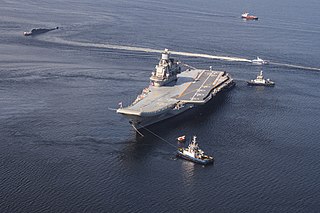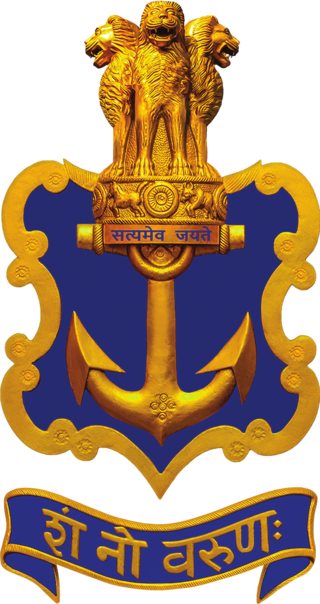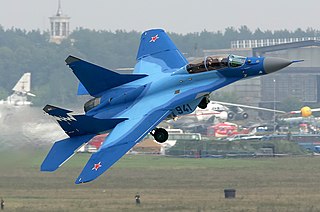
An aircraft carrier is a warship that serves as a seagoing airbase, equipped with a full-length flight deck and facilities for carrying, arming, deploying, and recovering aircraft. Typically it is the capital ship of a fleet, as it allows a naval force to project air power worldwide without depending on local bases for staging aircraft operations. Carriers have evolved since their inception in the early twentieth century from wooden vessels used to deploy balloons to nuclear-powered warships that carry numerous fighters, strike aircraft, helicopters, and other types of aircraft. While heavier aircraft such as fixed-wing gunships and bombers have been launched from aircraft carriers, these aircraft have not landed on a carrier. By its diplomatic and tactical power, its mobility, its autonomy and the variety of its means, the aircraft carrier is often the centerpiece of modern combat fleets. Tactically or even strategically, it replaced the battleship in the role of flagship of a fleet. One of its great advantages is that, by sailing in international waters, it does not interfere with any territorial sovereignty and thus obviates the need for overflight authorizations from third-party countries, reduces the times and transit distances of aircraft and therefore significantly increases the time of availability on the combat zone.

INSVikrant was a Majestic-class aircraft carrier of the Indian Navy. The ship was laid down as HMS Hercules for the British Royal Navy during World War II, but was put on hold when the war ended. India purchased the incomplete carrier in 1957, and construction was completed in 1961. Vikrant was commissioned as the first aircraft carrier of the Indian Navy and played a key role in enforcing the naval blockade of East Pakistan during the Indo-Pakistani War of 1971.

Admiral Flota Sovetskogo Soyuza Kuznetsov is an aircraft carrier serving as the flagship of the Russian navy. It was built by the Black Sea Shipyard, the sole manufacturer of Soviet aircraft carriers, in Nikolayev within the Ukrainian Soviet Socialist Republic and launched in 1985, becoming fully operational in the Russian Navy in 1995. The initial name of the ship was Riga; it was launched as Leonid Brezhnev, embarked on sea trials as Tbilisi, and was finally named after Admiral of the Fleet of the Soviet Union Nikolay Gerasimovich Kuznetsov.

The Kuznetsov-class aircraft carrying cruiser, Soviet designation Project 1143.5, is a class of STOBAR aircraft carriers operated by the Russian and Chinese navies. Originally designed for the Soviet Navy, the Kuznetsov-class ships use a ski-jump for launching high-performance jet aircraft and arrestor gears for landing. The design represented a major advance in Soviet fleet aviation over the Kiev-class carriers, which do not have full-length flight deck and could only launch VSTOL aircraft. The Soviet Union's classification for the class was as a heavy aircraft-carrying cruiser, which permits the ships to transit the Turkish Straits without violating the Montreux Convention. However, the Chinese variants are classified as aircraft carriers.

The Sukhoi Su-33 is a Soviet/Russian all-weather carrier-based twin-engine air superiority fighter designed by Sukhoi and manufactured by Komsomolsk-on-Amur Aircraft Production Association, derived from the Su-27 and initially known as the Su-27K. Compared with the Su-27, the Su-33 has a strengthened undercarriage and structure, folding wings and stabilators, all for carrier operations. The Su-33 has canards, and its wings are larger than the Su-27 for a slower stall speed. The Su-33 has upgraded engines and a twin nose wheel, and is air refuelable.

The Indian Navy is the maritime branch of the Indian Armed Forces. The President of India is the Supreme Commander of the Indian Navy. The Chief of Naval Staff, a four-star admiral, commands the navy. As a blue-water navy, it operates significantly in the Persian Gulf Region, the Horn of Africa, the Strait of Malacca, and routinely conducts anti-piracy operations and partners with other navies in the region. It also conducts routine two to three month-long deployments in the South and East China seas as well as in the western Mediterranean sea simultaneously.

STOBAR is a system used for the launch and recovery of aircraft from the deck of an aircraft carrier, combining elements of "short take-off and vertical landing" (STOVL) with "catapult-assisted take-off, barrier-arrested recovery" (CATOBAR).

Naval aviation is the application of military air power by navies, whether from warships that embark aircraft, or land bases. It often involves navalised aircraft, specifically designed for naval use. Seaborne aviation encompasses similar activities not restricted to navies, including marines and coast guards, such as in U.S. naval aviators.

INS Vikramaditya is a modified Kiev-class aircraft carrier and the flagship of the Indian Navy. The carrier entered into service in 2013.

The Mikoyan MiG-29K is a Russian all-weather carrier-based multirole fighter aircraft developed by the Mikoyan Design Bureau. The MiG-29K was developed in the late 1980s from the MiG-29M. Mikoyan describes it as a 4+ generation aircraft.
The Indian Naval Air Arm is the aviation branch and a fighting arm of the Indian Navy which is tasked to provide an aircraft carrier-based strike capability, fleet air defence, maritime reconnaissance, and anti-submarine warfare.

Admiral Arun Prakash, PVSM, AVSM, VrC, VSM is a former Flag Officer of the Indian Navy. He served as the Chief of the Naval Staff from 31 July 2004 to 31 October 2006 and as the Chairman of the Chiefs of Staff Committee from 31 January 2005 to 31 October 2006. He is one of India's most decorated naval officers.
As of 2024, the Chinese People's Liberation Army Navy (PLAN) has two active carriers, the Liaoning and Shandong, with the third, Fujian, currently undergoing sea trials. A fourth carrier, currently called "Type 004" and featuring nuclear propulsion, might be under construction. Wang Yunfei, a retired PLA Navy officer and other naval experts projected in 2018/2019 that China might possess five or six aircraft carriers by the 2030s.

Liaoning is a Chinese Type 001 aircraft carrier. The first aircraft carrier commissioned into the People's Liberation Army Navy Surface Force, she was originally classified as a training ship, intended to allow the Navy to experiment, train and gain familiarity with aircraft carrier operations. Following upgrades and additional training in late 2018, Chinese state media announced that the ship would shift to a combat role in 2019.

INS Hansa, is an Indian naval air station located near Dabolim in Goa, India. It is India's biggest naval airbase. The military air base has a civil enclave, that operates as Dabolim Airport.

Admiral Radhakrishna Hariram Tahiliani, PVSM, AVSM was a Flag officer in the Indian Navy. He served as the 11th Chief of the Naval Staff from 1 December 1984 until 30 November 1987. His prior commands included those as the Flag Officer Commanding-in-Chief (FOC-IN-C) of the Western Naval Command, FOC-IN-C of the Southern Naval Command and Flag Officer Commanding Western Fleet (FOCWF). A carrier-based aircraft pilot, he also served as the commanding officer of the aircraft carrier, INS Vikrant.

INS Vikrant is an aircraft carrier in service with Indian Navy. The carrier is India's fourth carrier and the first to be built in India. It was constructed by the Cochin Shipyard Limited (CSL) in Kochi, Kerala. The namesake Vikrant is a tribute to India's first aircraft carrier INS Vikrant (1961). Vikrant means "courageous" in Sanskrit. The motto of the ship, "जयेम सम् युधिस्पृधः" (Sanskrit), means "I defeat those who dare to challenge me" (English). It is currently one of two active aircraft carriers in the Indian Navy, the other being the flagship INS Vikramaditya.

In aviation, a ski-jump is an upwardly curved ramp that allows a fixed-wing aircraft to take off from a runway that is shorter than the aircraft normally requires. By providing an upward vector from the ski-jump's normal force, the aircraft is launched at an elevated angle and lift-off can be achieved at a lower airspeed than that required for flat takeoff, as it allows the aircraft more time to continue accelerating while airborne after leaving the runway. Ski-jumps are commonly used to launch shipborne aircraft from aircraft carriers that lack catapults.

The HAL Twin Engine Deck Based Fighter (TEDBF) is a canard delta wing, twin-engine, carrier-based, multirole combat aircraft currently under development for the Indian Navy. The TEDBF is being designed and developed by the Aeronautical Development Agency (ADA), and will be manufactured by Hindustan Aeronautics Limited (HAL). The TEDBF is intended to perform a multitude of missions, including air supremacy, air interdiction, anti-access/area denial (A2/AD), anti-ship warfare (ASW) and electronic warfare (EW) missions. The TEDBF is expected to replace the Mikoyan MiG-29K onboard the INS Vikramaditya and the INS Vikrant.

Saky is an air base adjacent to the settlement of Novofedorivka, Crimea. It was initially built by the Soviet Union in the 1930s, and has been operated under both Ukrainian and Russian sovereignty since 1992.



















